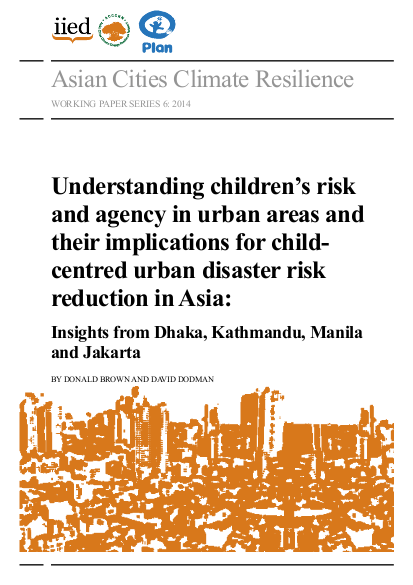
This paper presents the findings of a study undertaken by IIED i n partnership with Plan International on urban children’s risk and agency in four large Asian cities: Dhaka (Bangladesh), Kathmandu (Nepal), Manila (the Philippines) and Jakarta (Indonesia). The study involved focus group discussions with street children, working children and squatter and slum children, and key informant interviews with relevant local, national and international agencies involved in child rights and/or disaster risk reduction in each city.
The findings show that girls and boys who live and work on the s treets or in low-income informal settlements are among the most vulnerable and susceptible to environmental hazards, disasters and the impacts of climate change, primarily because of their poorquality living and working environments. Yet, the majority of disaster risk reduction programmes in urban areas of Asia are dominated by preparedness, early warning and response – and fail to address the particular risks facing boys and girls.
This paper therefore argues for a much greater focus on linking disaster risk reduction with long-term action that can address the provision of protective infrastructure and basic services as key determinants of child-health and disaster and climate resilience. It concludes by outlining a set of priority action areas for Plan International and other child-centred organisations that seek to reduce children’s long-term risks in Asian cities.
Resource collections
- Topics
- UN Habitat - Urban Response Collection
- Urban Response - Urban Crisis Preparedness and Risk Reduction
- Urban Response Collection - Community Engagement and Social Cohesion
- Urban Response Collection - Economic Recovery
- Urban Response Collection - Environment and Climate Change
- Urban Response Collection - Housing, Land and Property
- Urban Response Collection - Urban Crisis Response, Recovery and Reconstruction
- Urban Response Collection - Urban Resilience
